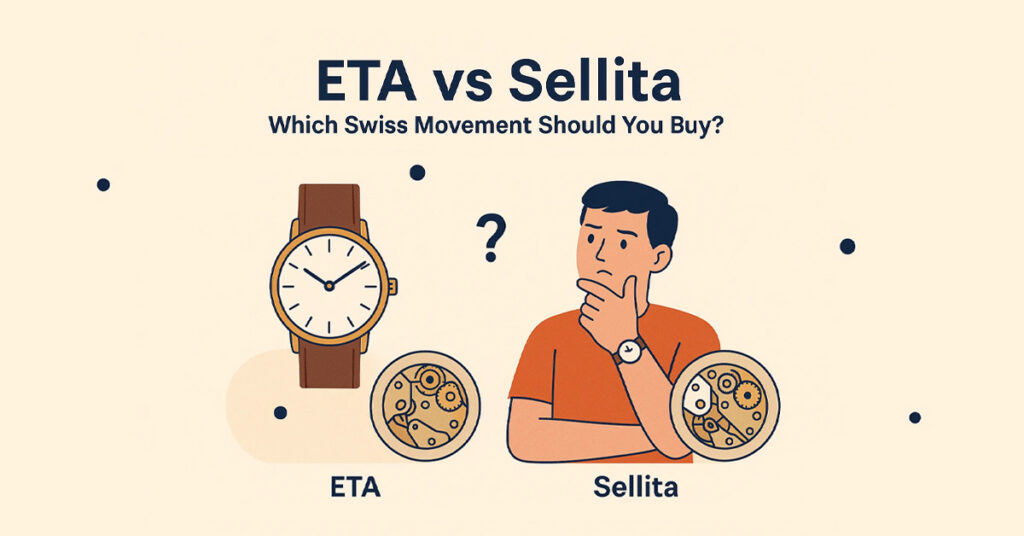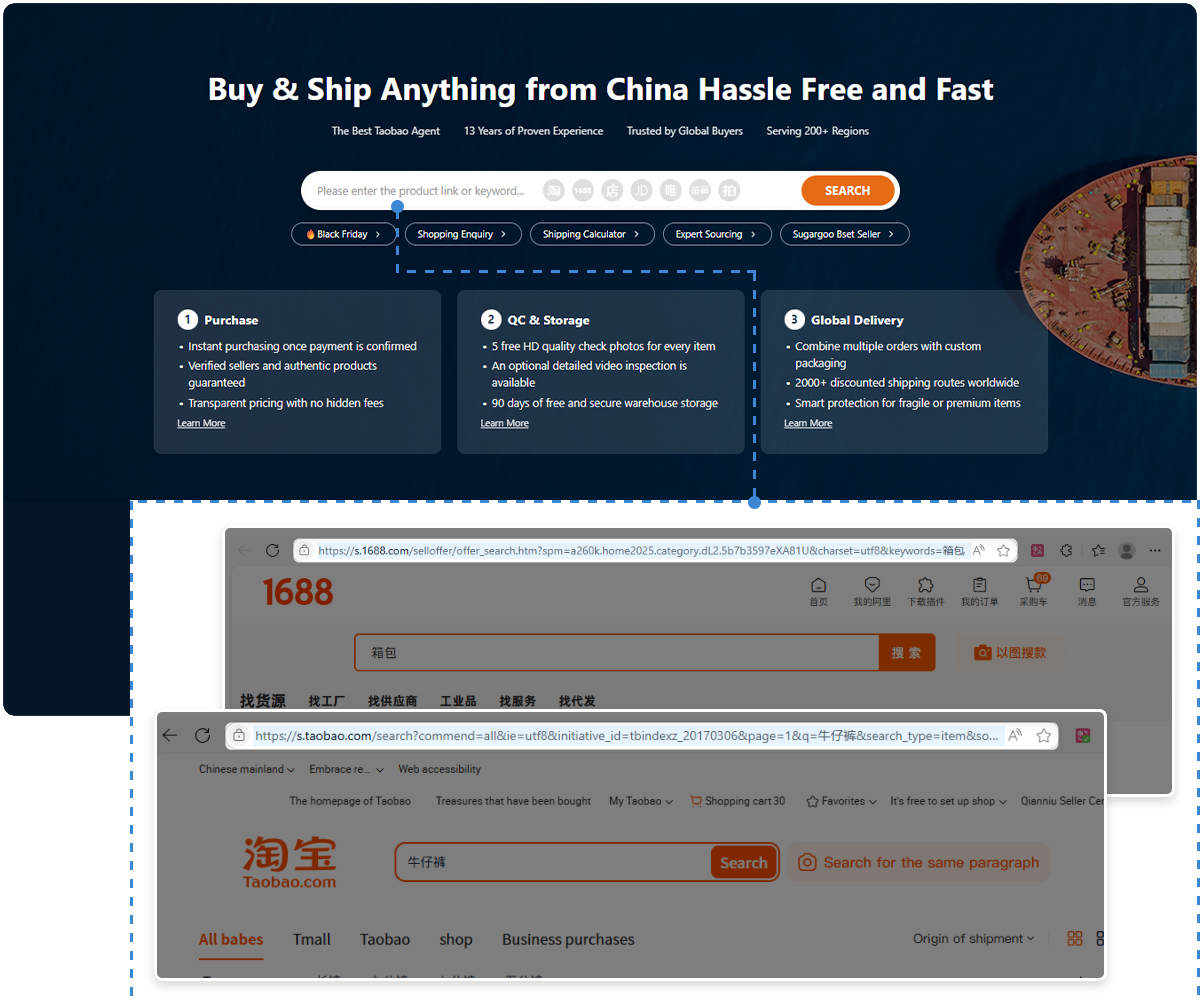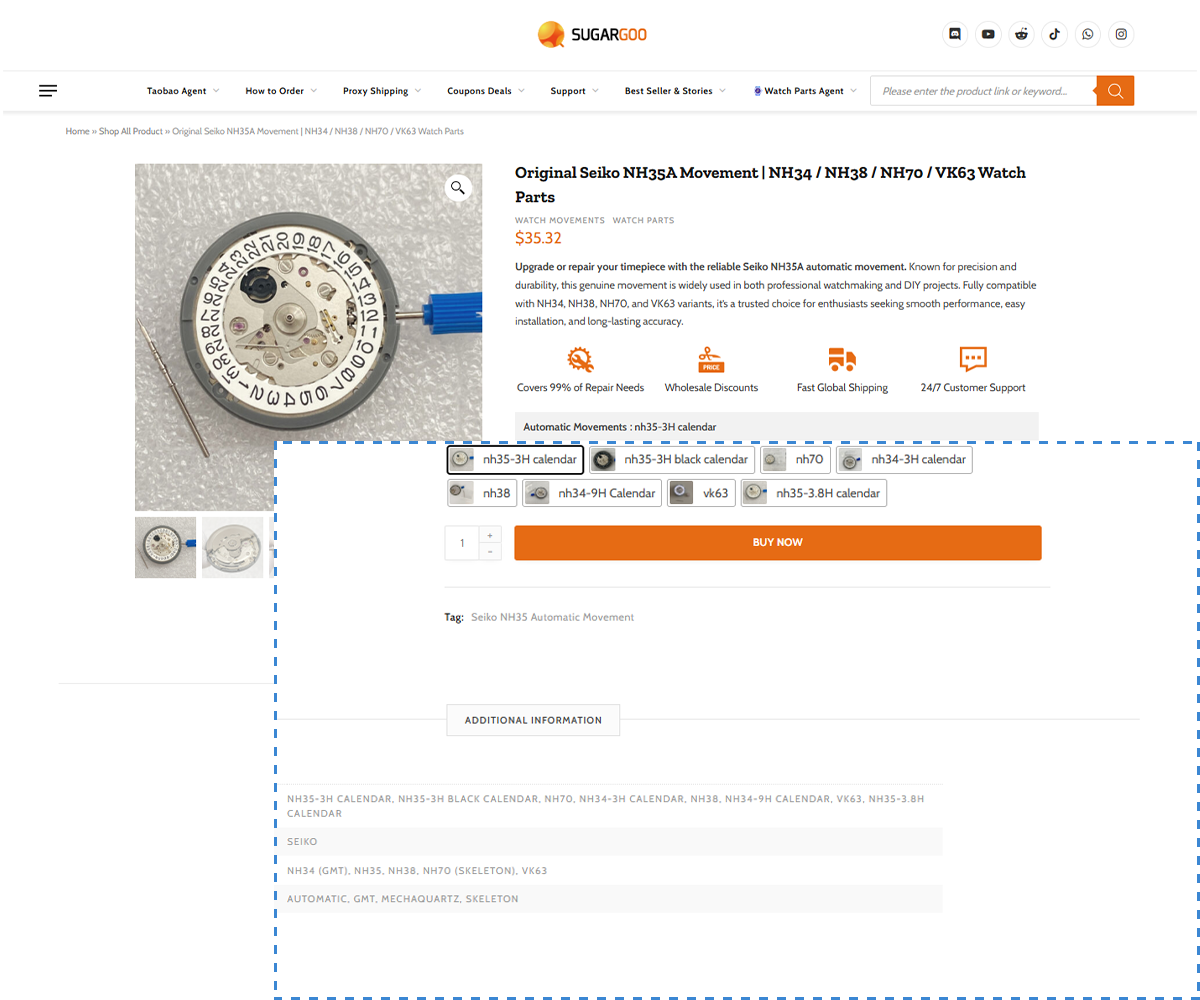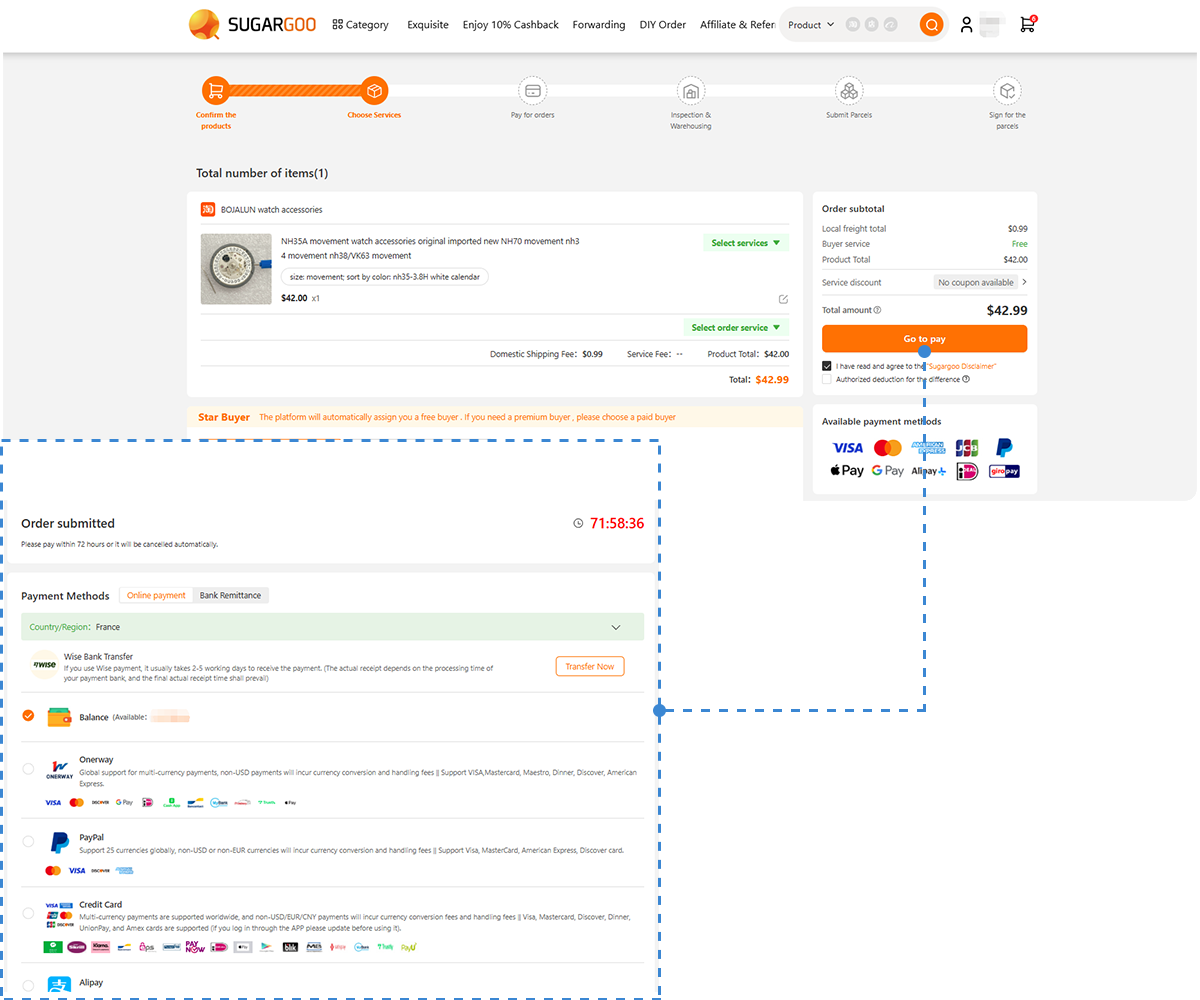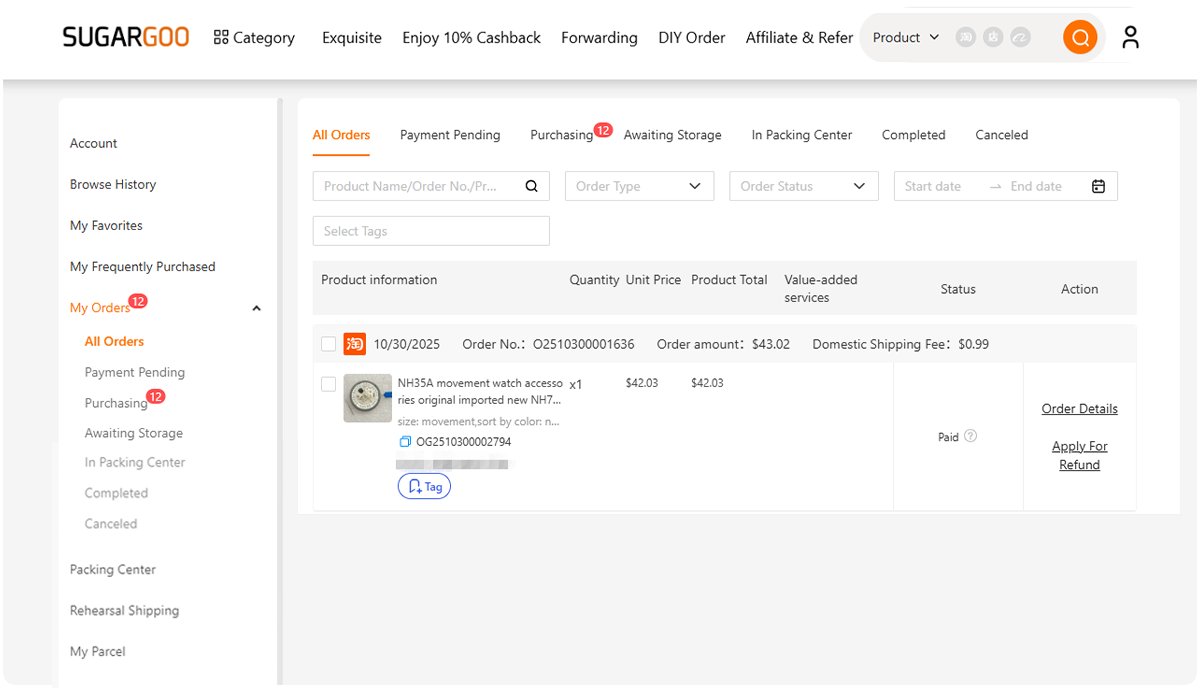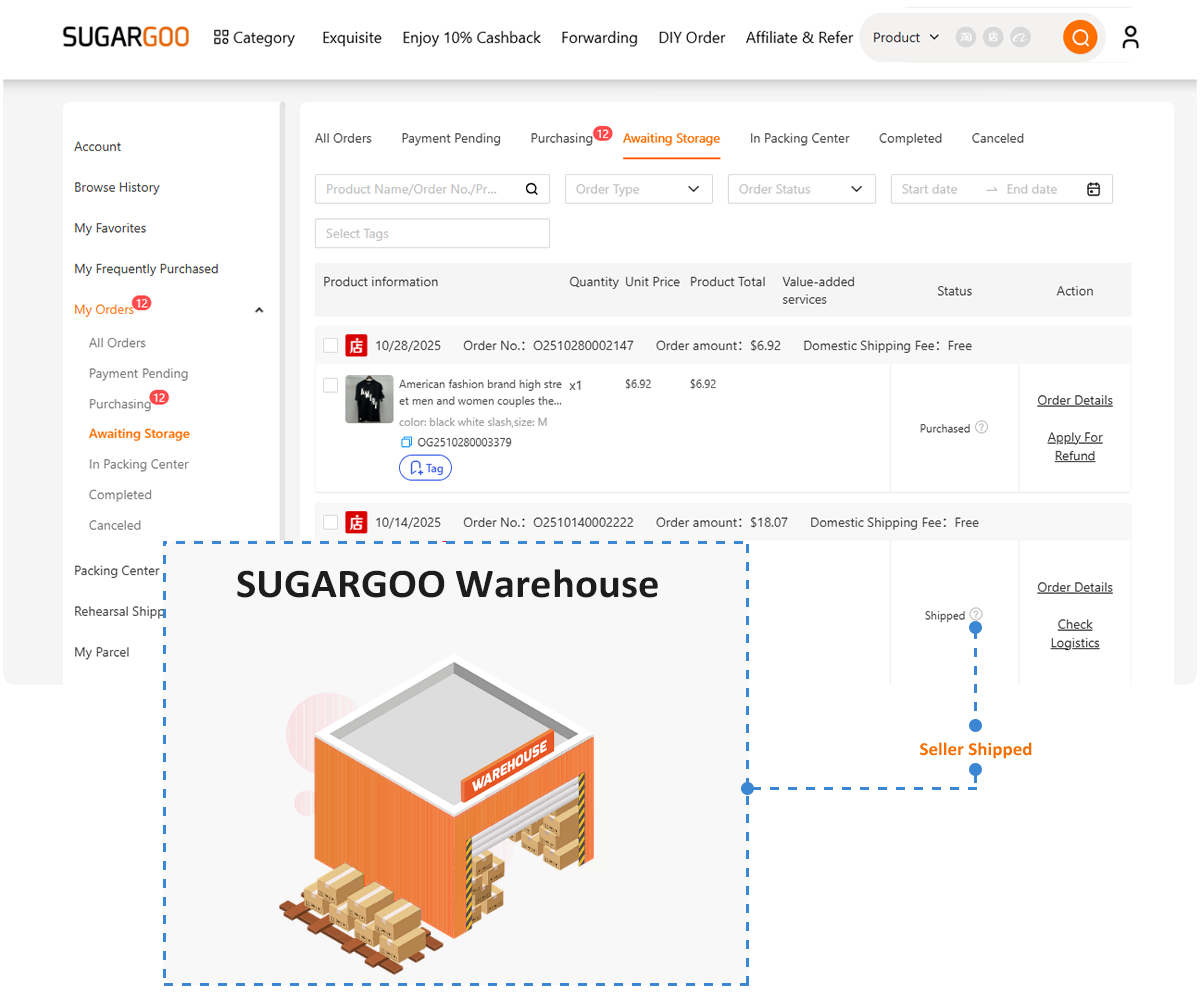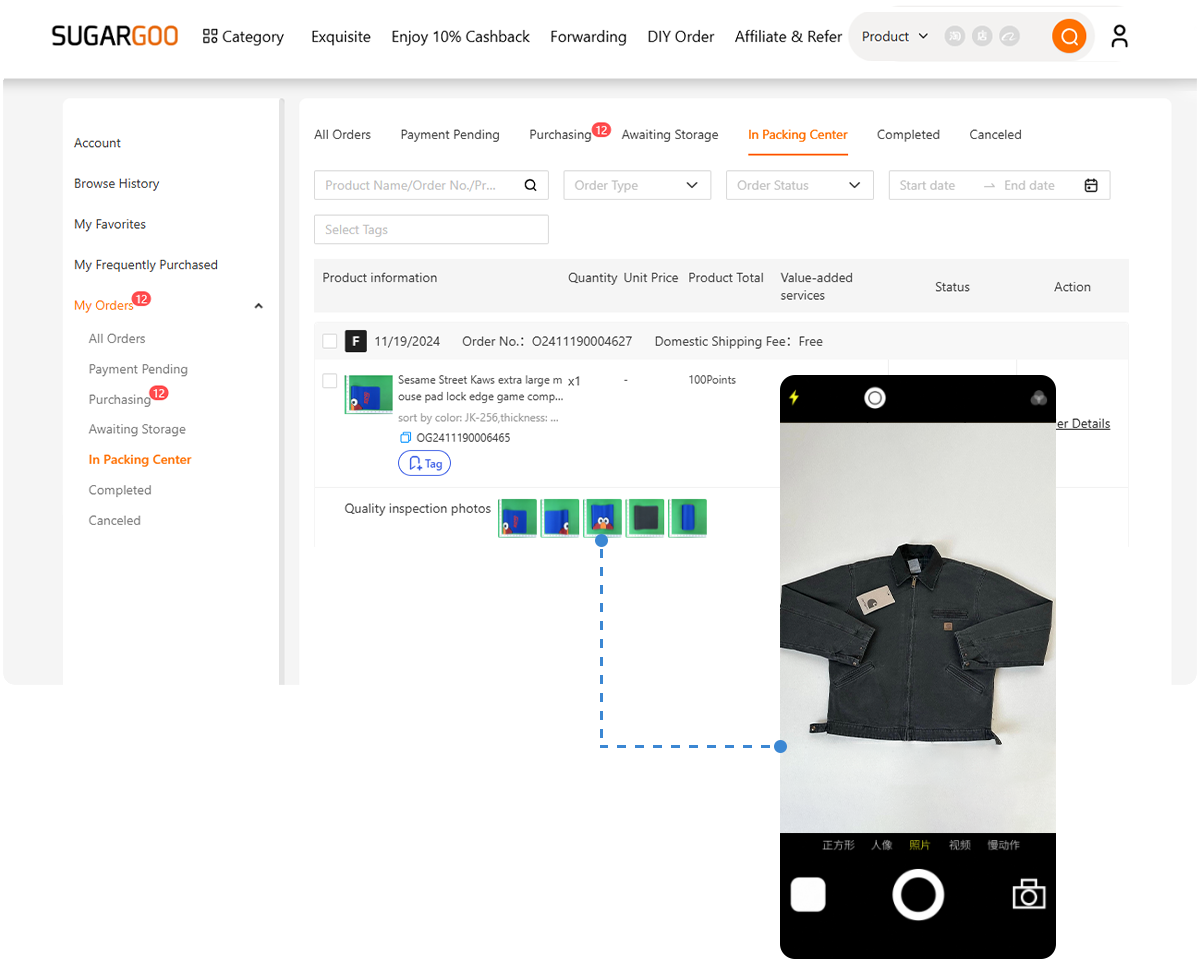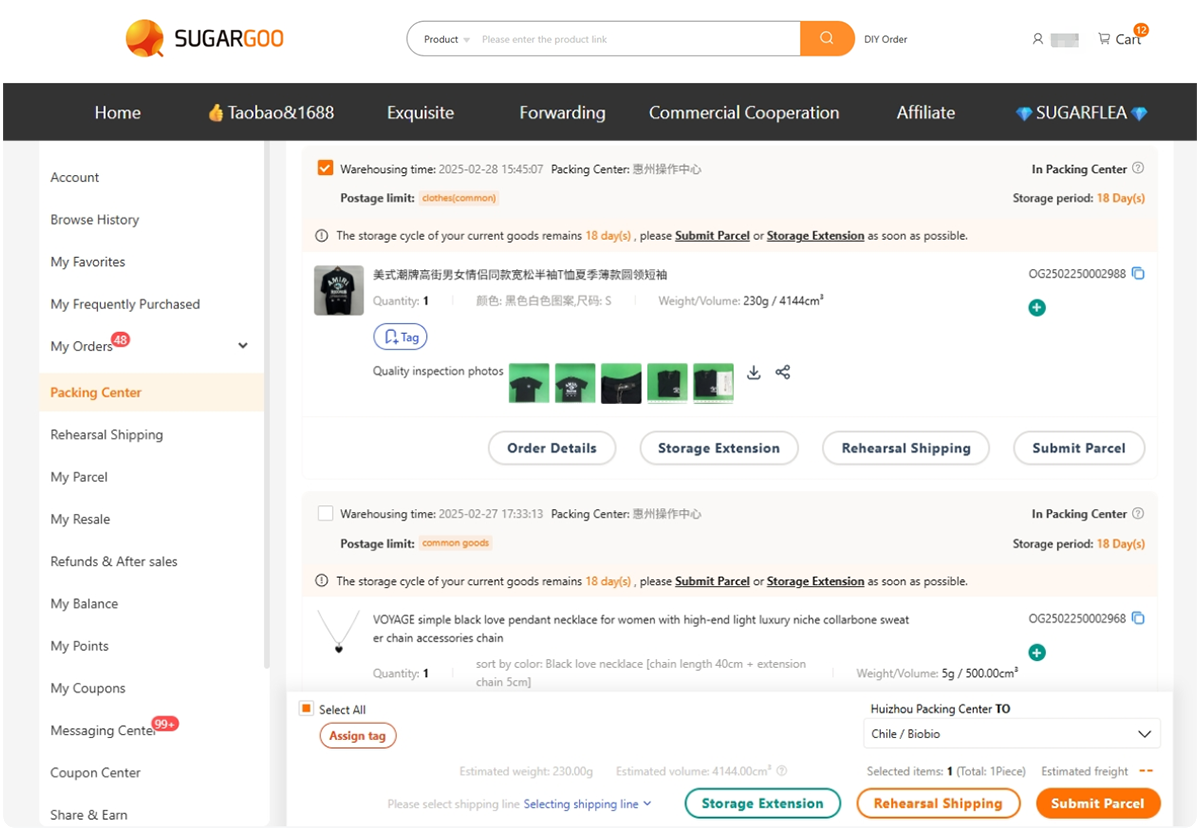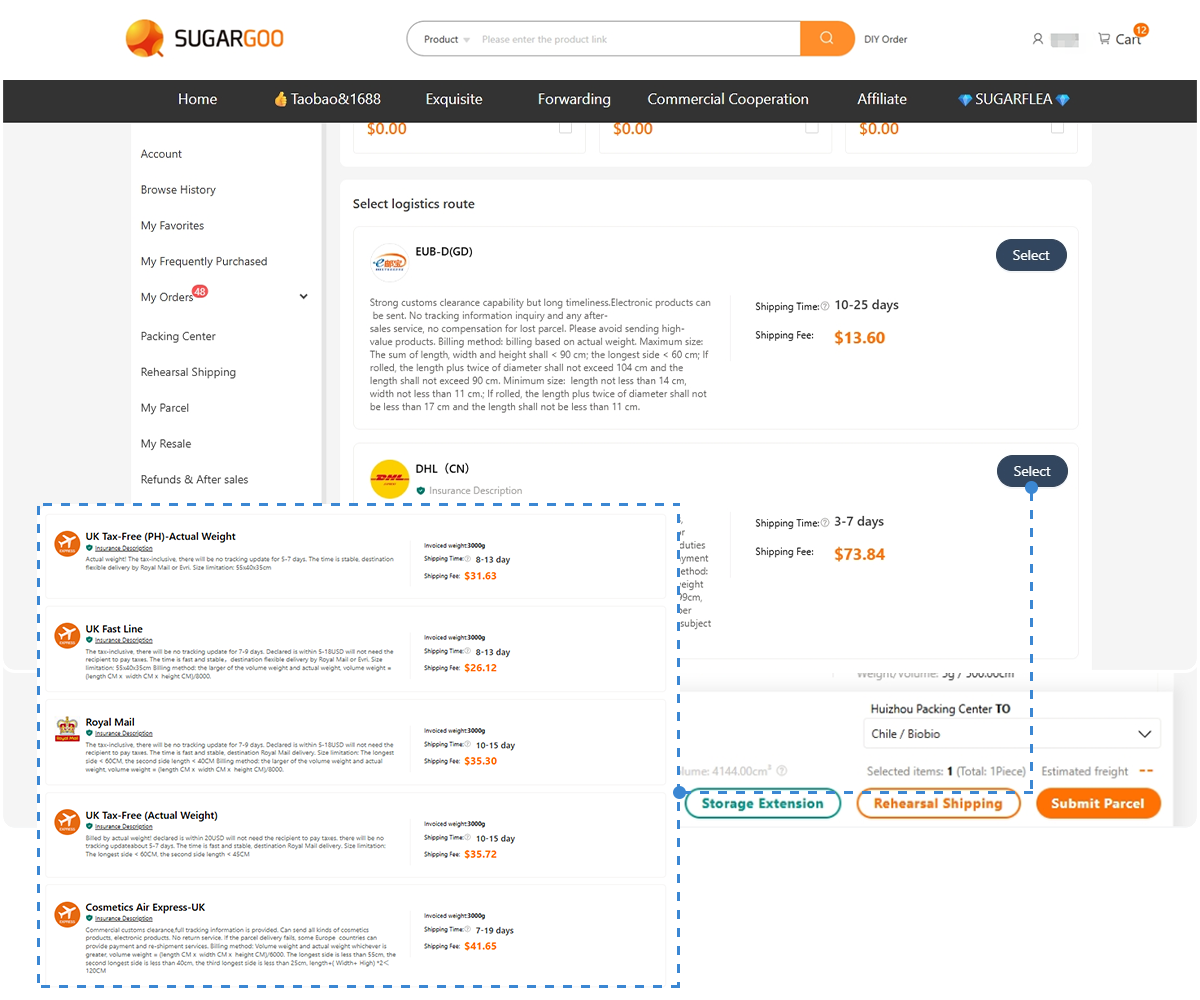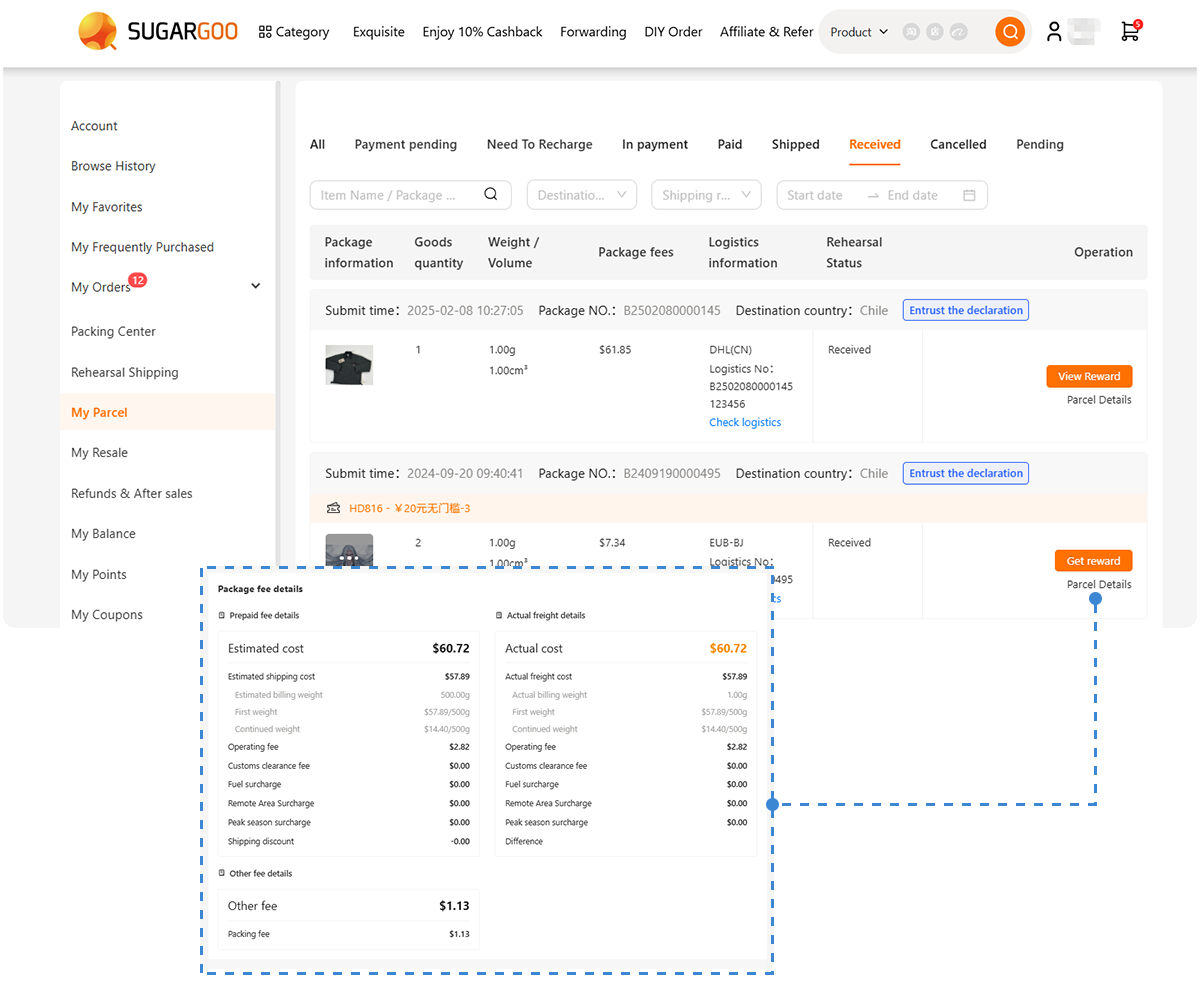When it comes to Swiss watch movements, ETA and Sellita are two names that loom large. If you’re a watch enthusiast or a modder building a custom timepiece, you’ve likely heard debates about ETA vs. Sellita. Both brands produce high-quality mechanical movements found in many Swiss watches. So, which one should you choose for your project? In this guide, we’ll break down the differences, pros and cons of each, and how you can source these movements (and other watch parts) easily through a Taobao agent like Sugargoo. By the end, you should have a better idea which movement fits your needs and style.
What Are ETA and Sellita?
ETA is a legendary Swiss movement manufacturer with roots dating back to the 1700s. Now part of the Swatch Group, ETA has produced some of the most ubiquitous mechanical calibers in the industry (for example, the famous ETA 2824-2, often called a workhorse movement). Many Swiss luxury brands historically used ETA movements in their watches due to their accuracy and reliability. ETA offers a wide range of calibers – from simple automatics to complex chronographs – and has a long-established reputation.
Sellita, on the other hand, is a Swiss company founded in 1950 that originally helped assemble ETA’s movements as a third-party supplier. In the 2000s, when ETA reduced supply of ebauche kits to brands outside Swatch Group, Sellita started manufacturing movements on its own, often based on ETA’s designs. In fact, Sellita’s SW series calibers are essentially clones of ETA movements (produced legally, since the ETA designs’ patents had expired). For instance, the Sellita SW200 is a nearly identical version of the ETA 2824. Today, Sellita is a major movement maker in its own right – powering many microbrands and even big names like Oris and TAG Heuer. They’ve become the go-to alternative for Swiss watch movements if an ETA isn’t available.
So in short, ETA and Sellita movements are very similar in design and function. Both are Swiss made, automatic mechanical movements with great track records. But there are a few key differences to consider before you buy one.
Key Differences Between ETA and Sellita Movements
At a glance, an ETA movement and its equivalent Sellita movement will perform almost the same. They have the same dimensions, so a watch case that fits an ETA 2824 can also fit a Sellita SW200 without issue. The power reserve, frequency (beats per hour), and complications (like date, etc.) are generally identical between an ETA caliber and the Sellita caliber it’s based on. However, “equivalent” doesn’t mean exactly the same. Here are some differences:
Jewels and Parts: Sellita often adds an extra jewel to certain designs. For example, the ETA 2824-2 has 25 jewels, while Sellita’s SW200-1 has 26 jewels. Functionally this doesn’t drastically change performance, but it’s one small distinction (the extra jewel in the SW200 is to reduce friction on a specific gear). Aside from jewel counts, most internal parts are not interchangeable between ETA and Sellita, even if the movements are clones. Sellita had to recreate parts with slight tweaks (to avoid patent issues and because of different manufacturing methods). This means you can’t mix-and-match parts – a Sellita wheel gear won’t work properly inside an ETA movement, and vice versa, due to subtle differences in gear tooth profiles and dimensions. For a modder, this isn’t a big deal unless you planned to use spare watch movement parts from one brand in the other.
Finishing and Grades: Both ETA and Sellita offer their movements in different grades (Standard, Elaboré, Top, and Chronometer grade for ETA; Sellita has similar tiers). These grades reflect the level of adjustment and decoration. Interestingly, at comparable grade levels, Sellita movements often have slightly nicer finishing than ETA. Watchmakers have noted that a Top-grade Sellita might have more polished surfaces or blued screws than a Top-grade ETA equivalent. This is more about aesthetics than performance – an unfinished Standard grade ETA will keep time just as well as a Standard Sellita – but for the detail-oriented, Sellita can offer a touch more visual flair out-of-the-box.
Availability: This is a big factor for independent watch builders and microbrands. ETA, being part of Swatch Group, at one point restricted sales of its movements to outside companies. For a while, it was hard for smaller brands (or hobbyists) to purchase new ETA movements in bulk. Sellita stepped in to fill that gap. Sellita will sell movements more freely and in smaller order quantities. So if you’re sourcing a movement for your DIY watch project, you might find it easier to get a Sellita. They’re readily available through parts suppliers and marketplaces. In fact, Sellita can fulfill small orders (even a few dozen pieces for microbrands) whereas ETA historically was less flexible. For an individual hobbyist, you’re likely buying just one movement – you’ll notice many online watch part stores stock Sellita SW200 or SW210 (no-date version) more often, whereas genuine ETA 2824s might be older stock or “NH” (new old stock).
Price: Along with availability, cost is a consideration. Sellita movements generally cost a bit less than their ETA counterparts. This isn’t a huge difference on a single unit (maybe you’ll save $20-$50 using a Sellita over an equivalent ETA, depending on market prices). But it’s one reason many boutique brands choose Sellita – it helps keep their watch prices down without sacrificing quality. For a DIY builder on a budget, that lower price is attractive. It’s worth noting that because of scarcity, sometimes ETA movements (especially older ones) can fetch higher prices from resellers, whereas Sellitas are in current production and moderately priced.
Perceived Prestige: Let’s be honest – part of the allure of “ETA” is the name recognition. ETA has been around for ages and even non-watch geeks might have heard “ETA movement” tossed around in watch reviews. Sellita, being newer as an independent brand, doesn’t have the same prestige among traditionalists. Some watch enthusiasts initially looked down on Sellita as just a “clone” maker. However, this perception is changing fast. Many respected Swiss brands use Sellita in their watches today – including big names like Tudor, TAG Heuer, IWC, Hublot, Oris and more. When you see luxury brands confidently putting Sellita calibers in watches costing thousands of dollars, it’s clear that Sellita has earned industry respect. So from a quality standpoint, you shouldn’t worry – but if you personally value the heritage of ETA, you might have a soft spot for it. For more on this, check out our guide on why Swiss movements are often considered the benchmark.
Innovation: Since Sellita started by copying ETA designs, one might think they just clone and call it a day. But Sellita has been innovating as well. They’ve introduced movements with longer power reserves (like the SW300 with ~56 hours, and they’re working on updating the SW200 to 60+ hours). They even created some of their own movements not based on ETA, such as specialty chronographs or high-beat movements. ETA, meanwhile, has innovated with things like the Powermatic 80 (an 80-hour reserve movement used in Tissot and other Swatch brands) – though that one they typically keep within the group. For the scope of standard workhorse movements, innovation isn’t a huge deciding factor for most modders; both companies produce continuously improved versions of their calibers over time. If you’re interested in the latest, see our 2025 roundup of the top 5 automatic movements for custom watches (spoiler: both ETA and Sellita feature prominently on that list!).
In summary, ETA vs Sellita differences are relatively minor. Same size, same functions, nearly the same quality. Sellita might have a slight edge in finishing and price, and is easier to buy fresh. ETA has the legacy and name, and some might argue a slight edge in long-term track record (though by now Sellita’s track record is pretty solid too).
Which One Should You Choose?
Okay, so both are great – but you need to pick one for your watch project. How to decide?
- Availability & Sourcing: If you have a specific movement in mind that you can actually get your hands on, go for it. For example, if you find a brand new Sellita SW200 available from a parts seller, but can only find second-hand or questionable-origin ETA 2824s, it makes sense to choose Sellita. The same goes if you’re ordering from overseas. Through Sugargoo (a Taobao agent service), you might locate listings for new Sellita movements on Chinese marketplaces more readily than ETA. Availability can be the deciding factor – the good news is you really aren’t compromising quality with the more available option.
- Price: Are you trying to keep costs down? If you’re building on a budget, check the prices for both. Often, Sellita will be a bit cheaper for the same specs. That said, if you find a great deal on an ETA (sometimes bulk sellers offload ETA movements for cheap), you might snag it. Generally, though, cost differences for a single unit aren’t huge. Still, every dollar saved could go towards other parts like a nicer leather strap or a sapphire crystal upgrade. Don’t forget to check for Sugargoo coupons to maximize savings.
- Brand Preference: Some enthusiasts just feel better knowing their custom watch has an “ETA inside.” That’s a valid personal preference. If you love the idea of using the exact same ETA 2824 that’s in some luxury Swiss watches, then go for ETA. On the flip side, if you appreciate rooting for the underdog, you might enjoy using a Sellita and telling your watch buddies about how Sellita has become a powerhouse alternative. At the end of the day, in a finished watch, 99% of people can’t tell whether it’s an ETA or a Sellita without looking at the engraving under a loupe. Both will reliably tick away and keep good time. For more on prestige, explore the history of ETA movements in luxury watches.
- Use Case: Think about what you’re building. Is it a beater watch for everyday wear, or a showpiece? Are you going to display the movement through a transparent case back? If so, you might care about the finishing – maybe you want that extra bit of decoration on the movement. In that case, a Sellita (especially if you get an Elaboré or Top grade) might impress with its looks. Or perhaps you plan to modify the movement (swap out the rotor for a custom one, for example). Both movements allow that, but note that not all parts swap between ETA and Sellita as mentioned. If you already have spare parts or custom rotors designed for ETA, using an actual ETA movement ensures compatibility. Conversely, there are custom rotors made for Sellita too – just ensure you get the right one. Check out our custom watch parts section for options.
- Future Service: Another minor point – in a decade or so, if your watch needs servicing or parts, which will be easier? It’s hard to say; both will likely be around. Historically, ETA parts were everywhere (and still are, especially generic parts since the designs are common). Sellita parts are also widely available now, and Sellita is very service-friendly in terms of selling parts to independent watchmakers. It might actually be easier to source parts for Sellita in the distant future since they openly supply spares, whereas ETA has in recent times been more restrictive with parts distribution (to push people to Swatch service centers). For a DIY person, Sellita might be the friendlier option in terms of getting replacement parts down the line. Our watch oils and lubricants guide can help with maintenance.
Bottom line: You really can’t go wrong with either. If forced to give a recommendation: Buy a Sellita if you want a brand-new Swiss movement at a good price with no hassle. Choose an ETA if you specifically want the ETA name or you’re reusing a movement from a donor watch. Many watch builders actually don’t have a strong preference – they consider ETA and Sellita movements interchangeable in quality. As one article aptly put it, the ETA vs Sellita “clash” ultimately ends in a draw, and it’s the buyers who win – because we have two excellent options to choose from.

Sourcing Watch Movements and Parts through Sugargoo
Now that you’ve decided on a movement, how do you actually get one? If you live outside of China and you’re eyeing deals on Taobao or 1688 (popular Chinese marketplaces) for watch parts, Sugargoo can make your life a lot easier. Sugargoo is a platform that acts as a shopping agent (a.k.a Taobao agent) – it helps international buyers purchase items from Chinese websites and get them shipped worldwide. This is super useful for watch hobbyists because a lot of interesting and affordable watch parts (from dials and hands to complete movements) are sold on Chinese sites, often at lower prices.
Here’s how Sugargoo can help with your watch project:
Access to Parts: Sugargoo’s website has a dedicated section for watch enthusiasts. You can find categories for watch movements (including sub-categories like ETA series watch movements and other Swiss or Japanese movements), watch accessories, and all sorts of components. If you need individual watch movement parts (say, a replacement balance wheel or keyless works), or larger components like watch cases and watch straps, you can browse those categories. It’s kind of like window shopping on Taobao, but in English and tailored for watch modders. The selection is vast – whether you want a Seiko NH35 (if you chose to go Japanese instead) or that specific Sellita SW200-1, there’s a good chance you’ll find a listing for it via Sugargoo.
Ease of Ordering: Once you find the item you want, Sugargoo handles the purchasing from the Chinese seller for you. No need to deal with foreign payment methods or language barriers. You place an order with Sugargoo, and they buy the item on your behalf. For tips on buying from Taobao/1688 via Sugargoo, check our FAQ guide.
Consolidation & Shipping: A big perk of using an agent service is you can order multiple items from different sellers, have them all sent to Sugargoo’s warehouse in China, then combine them into one international shipment. This saves a ton on shipping costs. For example, you could order a movement, a set of watch hands, a custom watch dial, and a new strap, and ship them together. We’ve even written a guide on how to combine multiple orders on Sugargoo to streamline this process. It’s perfect if you’re doing a full build that requires parts from various sources. Track your shipment easily with our Sugargoo tracking guide.
Cost Savings: Beyond consolidation, you can often find better prices for parts on the Chinese market. Plus, Sugargoo frequently offers promotions or coupons. New users might get discounts, and there are periodic coupon codes to reduce fees or shipping costs. (If you’re curious, here’s a primer on how to use Sugargoo coupons to save a few bucks.) When you’re buying something like a Swiss movement, every bit of savings helps – you might end up paying far less than sourcing the same part domestically.
Support and Reliability: Sugargoo provides customer support in English, and even offers services like quality check photos (so you can have them inspect the item at the warehouse and send you pictures to ensure it’s correct before shipping out). This is a nice assurance when you’re buying expensive parts like a watch movement. If something arrives defective or not as described, Sugargoo can assist with returns or communication with the seller. (They have guides like the Sugargoo returns & refunds guide if issues arise, though thankfully that’s rare for straightforward parts orders.) For more on quality checks, see our Sugargoo QC service guide.
In short, if you’re a watch modder outside China, Sugargoo is like your bridge to a huge marketplace of watch parts. It takes care of the hard parts (logistics and translation) so you can focus on the fun part – modding your watch! Interested in earning while shopping? Explore the Sugargoo affiliate program guide for influencers or the general affiliate earning guide.
Pro Tip: If you haven’t used Sugargoo before, it’s quick to get started – you can sign up for a free account here. Once logged in, you can search for specific movements (try keywords like “ETA 2824 movement” or “Sellita SW200” in the search bar) or browse the categories we mentioned. Add items to your cart, and you’re off to the races. 🎯
Final Thoughts
Choosing between ETA and Sellita ultimately comes down to what’s available to you and what matters more in your personal build. For most builders, Sellita offers the perfect combination of Swiss quality and ease of purchase. But there’s nothing wrong with holding out for an ETA if that’s your preference – both will serve you well for years to come. The good news is that with services like Sugargoo, you’re not limited in options; you can hunt down exactly the movement you want, be it Swiss or even Japanese, and all the other pieces needed to complete your custom watch.
Remember, building or modding a watch is a journey. Enjoy the process of picking out the movement, and don’t hesitate to tap into the community for help. You might even want to join some watch modding communities you should join to share your experience or ask questions. And if you’re curious about other aspects of watch movements, check out some of our related articles – for example, we explain why Swiss movements are often considered the benchmark, and we also have a 2025 roundup of the top 5 automatic movements for custom watches (spoiler: both ETA and Sellita feature prominently on that list!).
Happy building, and may your timepieces tick flawlessly! ⏱️💪
